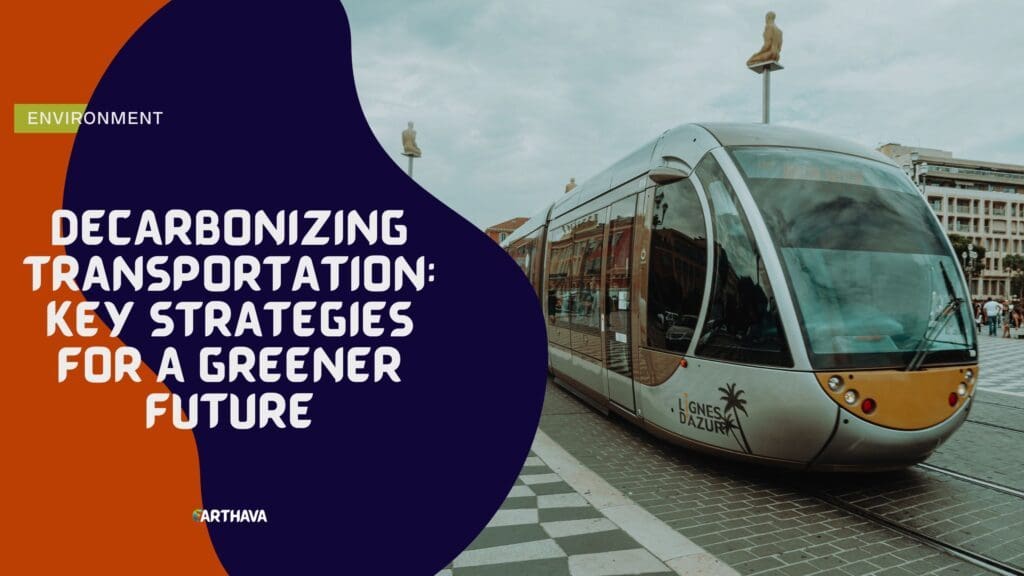Climate change is currently a hot topic in the business and political arena — and for good reason. The crucial decisions that the public and private sector make about sustainable and renewable energies today will have a huge impact on the future generations of a global society. However, when this topic is discussed, the focus falls mainly on large-scale industries and their contribution to the greenhouse gases in the atmosphere.

An important factor that absolutely cannot be left out of the climate conversation is the general transportation of all types, whether it’s cars, trucks, buses, planes, or trains.
Transportation is a major player in advancing sustainable energies in the US.
In fact, 28% of all energy used in the United States is used to move goods and people from point A to point B — with a majority of that being smaller vehicles like motorcycles, light trucks, and personal vehicles (a whopping 58%). As you might have guessed, these types of transportation are principally fossil fuel-burning vehicles. In America, this way of getting around is simply the norm.
That isn’t to say there haven’t been strides to move to more sustainable and renewable options for personal transport, with the introduction of biofuels, hybrid vehicles, and all-electric cars. Great progress has been made, but more needs to be done shortly. The United Nations even cites sustainable transport as “essential to achieving most, if not all of the Sustainable Development Goals (SDGs) and the 2030 Agenda for Sustainable Development.”
How can this be done?
In part, by further developing technologies that are already in play, and looking for other alternative solutions. For example, the efficiency and power of all-electric cars have come a long way since they were first introduced, and Mercedes-Benz has even debuted its first all-electric large transport truck.
While the truck can only travel up to 124 miles at this point, it’s still a great way to reduce carbon emissions made by urban delivery and transport in big cities, and board members at Daimler are confident that, by the time the truck reaches mainstream production at the beginning of the coming decade, battery and charging technologies will have advanced enough to make it even more efficient and attractive to companies and their drivers.
Ways to reduce clogged highways in high-traffic cities must also be a priority for new developments in sustainable transport. In places where traffic is terrible, there tend to be common underlying themes that result in these exhaust-filled highways. In Florida, specifically, studies have found that not only does the state have more commuters than the national average, but public transport systems are also poorly utilized. This has a huge impact on CO2 emissions and energy efficiency.
Ride-sharing and public transport can help reduce these numbers greatly.
The great thing about ridesharing is that not only do you cut down on individual car pollution, but you also save on gasoline and the loneliness/annoyance of a solo commute. “Shared mobility” as it’s been called, has made a huge dent in car ownership in urban areas in the United States.
Once again, Daimler is behind the highly popular Car2Go service that offers one-way car hire for its users in various North American cities, and it’s not the only one available to drivers in North America. On the contrary, there’s a list of ten out there that are recommended to drivers who are hoping to contribute to CO2 emission reduction and more sustainable forms of transportation.
Public transport also needs to increase in the United States. A study done in 2014 compared journeys under one mile taken by both drivers in Europe and the US. The results showed that Europeans chose alternate modes of transport (biking, walking, or public transport) 70 percent of the time, whereas the same percentage reflected the choices of US drivers.
The US needs to move away from being so vehicle-dependent if we are to make any major strides in sustainable development. But to do so, the options need to be there. Luckily, many places in the country have recognized the necessity and the potential to further develop this important infrastructure. Thirty-six tramways exist, as opposed to a mere eight in the 1980s, and 2014 numbers showed that ridership of public transport grew at a rate two times that of the population.
However, a great deal of work still needs to be done, and this requires support from the general public and an overall investment from the private sector. It’s time for the issue of climate change as it relates to US transportation choices to be taken seriously and held as a number-one priority.
To reiterate the UN’s statement, this is an essential component to achieving successful sustainable development.



It’s interesting that the United Nations said sustainable transport will be the most essential part of achieving the 2030 Agenda for Sustainable Development. Lately I’ve been interested in how our current transportation methods impact the environment. I didn’t realize they played such a big part in our overall sustainability; thanks for explaining that here!